80x5 -
240x3 -
240x4 -
320x1 -
320x2 -
320x3 -
640x1 -
640x2
Set display option above.
Click on
images to enlarge. |
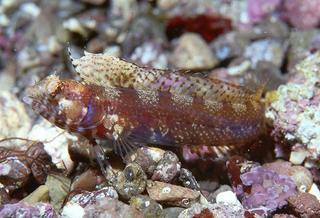
© Copyright Ross Robertson, 2006
· 12
Emblemaria walkeri |
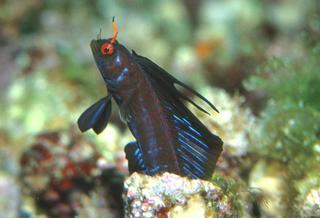
© Copyright Ross Robertson, 2006
· 12
Emblemaria hypacanthus |
|
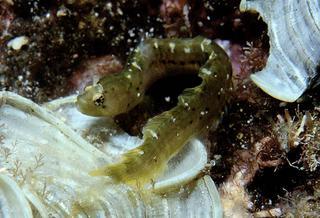
© Copyright Ross Robertson, 2006
· 12
Stathmonotus sinuscalifornici |
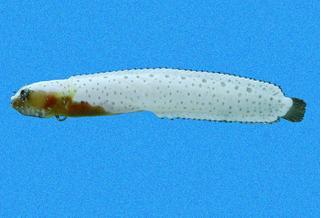
© Copyright Ross Robertson, 2006
· 12
Stathmonotus lugubris |
|
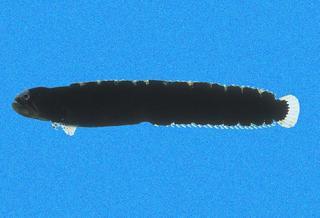
© Copyright Ross Robertson, 2006
· 12
Stathmonotus lugubris |
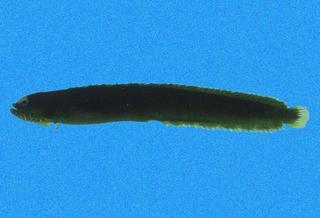
© Copyright Ross Robertson, 2006
· 12
Stathmonotus lugubris |
|
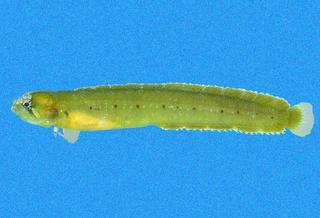
© Copyright Ross Robertson, 2006
· 12
Stathmonotus lugubris |
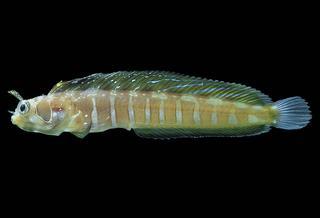
© Copyright Ross Robertson, 2006
· 12
Ekemblemaria myersi |
|
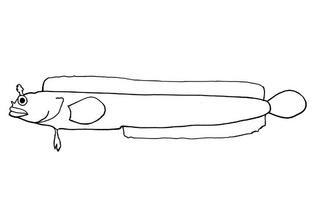
© Copyright Ross Robertson, 2006
· 12
Ekemblemaria lira |
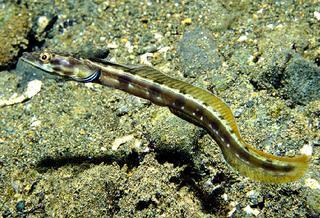
© Copyright Ross Robertson, 2006
· 12
Chaenopsis sp_sftep_a |
|
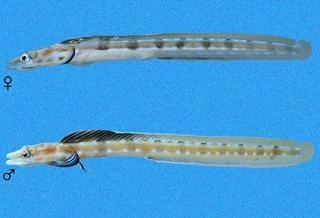
© Copyright Ross Robertson, 2006
· 12
Chaenopsis sp_sftep_a |
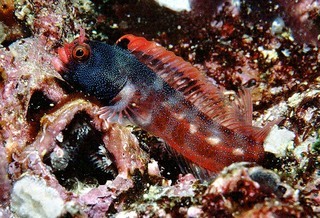
© Copyright Ross Robertson, 2006
· 12
Acanthemblemaria |
|
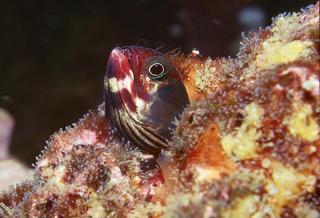
© Copyright Ross Robertson, 2006
· 12
Acanthemblemaria balanorum |
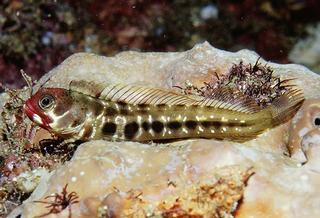
© Copyright Ross Robertson, 2006
· 12
Acanthemblemaria balanorum |
|
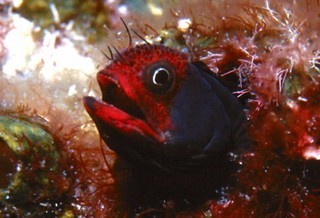
© Copyright Ross Robertson, 2006
· 12
Acanthemblemaria balanorum |
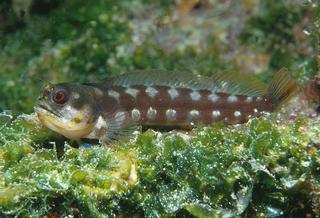
© Copyright Ross Robertson, 2006
· 12
Acanthemblemaria castroi |
|
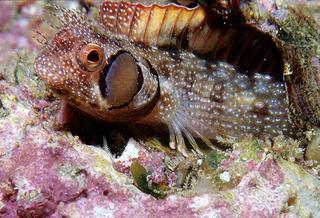
© Copyright Ross Robertson, 2006
· 12
Acanthemblemaria crockeri |
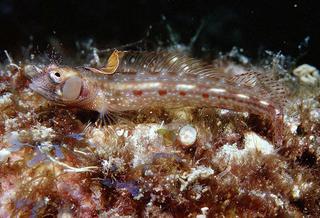
© Copyright Ross Robertson, 2006
· 12
Acanthemblemaria crockeri |
|
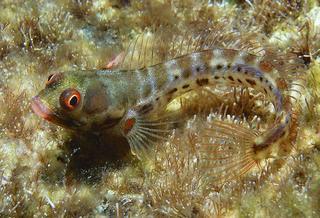
© Copyright Ross Robertson, 2006
· 12
Acanthemblemaria hancocki |

© Copyright Gerald Allen, 2006
· 0
Chaenopsidae |
See
| | |
| | IDnature guides | |
| Overview |
Main identification features
- +/- cirri: nostrils and eyes; head often rough
- 1 dorsal fin
- dorsal and anal finsbases long
- no scales
- no ll
FAMILY CHAENOPSIDAE
TUBE-BLENNIES, BARNACLE-BLENNIES, PIKE-BLENNIES, SIGNAL-BLENNIES, WORM-BLENNIES
Distintive features of tube blennies include the lack of scales; the absence of a lateral line; usually small conical teeth; at least half as many soft rays as spines in the dorsal fin, which has XVII-XXVIII, 10-38 rays; and all fin rays are unbranched; cirri present or absent over nostrils, present or absent over the eye, but absent on nape; head often spiny or rough.
The tube blennies are small, fishes that are common in shallow seas throughout the region and in the western Atlantic. They are one of the few families that are confined to the tropical and subtropical Americas. The family contains 13 genera and approximately 82 species; 33 species (all endemics) and 10 genera (three endemics) are known from the tropical eastern Pacific.
Their common name is derived from the interesting habit of seeking permanent shelter in the unoccupied shells of barnacles or in tubes of certain worms and molluscs. Most species are inhabitants of rocky reefs or coral areas, although members of Chaenopsis and Emblemaria are associated with rubble or sandy bottoms. They feed mainly on zooplankton including copepods, isopods, and amphipods. They also consume barnacle cirri. Marked sexual dimorphism is present in most species. Males are usually brighter colored and often have better developed supraorbital cirri, longer jaws, and higher dorsal fins.
They seem to be most closely related to and possibly derived from the Weed Blennies (family Labrisomidae). Although very tiny, these fishes are a favourite subject of underwater photographers. Prior to spawning the males periodically emerge from their refuge and display to nearby females. In species of Chaenopsis and Emblemaria this display is very spectacular and consists of thrusting the fully erect, sail-like dorsal fin far forward. The male nuptial display is further enhanced by dramatic changes in fin and body coloration. Once attracted to the males lair, the female deposits her eggs. The nest is subsequently guarded by the male for several days until hatching.
|
| References |
- Allen , G.R. and Robertson, D.R., 1994., Fishes of the Tropical Eastern Pacific., Crawford House Press Pty Ltd:1-332.
- Beebe , W. and Tee-Van, J., 1938., Eastern Pacific expeditions of the New York Zoological Society, XV. Seven new marine fishes from Lower California., Zoologica, 23:299-312.
- Brock, V.E., 1940., Three new blennioid fishes from the west coast of Mexico., Stanford Ichthyol. Bull., 2:29-35.
- Béarez, P., 1996., Lista de los Peces Marinos del Ecuador Continental., Revista de Biologia Tropical, 44:731-741.
- Böhlke , J. and Mead, G. W., 1957., A new Blenny from the Coast of Western Mexico., Notula Naturae of the Academy of Natural Sciences of Philadelphia, (301):1-8.
- Böhlke, J.E., 1953., A new stathmonotid blenny from the Pacific Coast of Mexico., Zoologica, 38(3):145-149.
- Böhlke, J.E., 1957., A review of the blenny genus Chaenopsis, and the description of a related new genus from the Bahamas., Proc. Acad. Nat. Sci. Phila., 109:81-103.
- Böhlke, J.E., 1957., On the occurrence of garden eels in the western Atlantic, with a synopsis of the Heterocongrinae., Proc. Acad. Nat. Sci. Phila., 109:59-79.
- Castro-Aguirre, J.L. and Balart, E.F., 2002., La ictiofauna de las islas Revillagigedos y sus relaciones zoogeograficas, con comentarios acerca de su origen y evolucion. En: Lozano-Vilano, M. L. (Ed.). Libro Jubilar en Honor al Dr. Salvador Contreras Balderas., Universidad Autonoma de Nuevo León:153-170.
- Chabanaud, P., 1942., Contribution à la morphologie de Téléostéens appartenant à diverses familles de l'ordre des Blennoidea. Description d'une espèce et d'un genre inédits., Bull. Soc. Zool. Fr., 67:111-120.
- Edgar, G.J. Banks, S., Fariña, J.M., Calvopiña, M. and Martínez, C., 2004., Regional biogeography of shallow reef fish and macro-invertebrate communities in the Galapagos archipelago., Journal of Biogeography, 31:1107-1124.
- Eschmeyer , W. N. , Herald , E. S. and Hamman, H., 1983., A field guide to Pacific coast fishes of North America from the Gulf of Alaska to Baja California. Peterson Field Guide Ser. 28., Houghton Mifflin:336pp.
- Findley, L.T., Hendrickx, M.E., Brusca, R.C., van der Heiden, A.M., Hastings, P.A., Torre, J., 2003., Diversidad de la Macrofauna Marina del Golfo de California, Mexico., CD-ROM versión 1.0. Projecto de la Macrofauna del Golfo . Derechos reservados de los autores y Conservación Internacional.
- Fischer , W. , Krup , F. , Schneider , W. , Sommer , C. , Carpenter , K. E. and Niem, V. H., 1995., Guia FAO para la Identificacion de Especies de para los fines de la Pesca. Pacifico Centro-Oriental. Volumen II. Vertebrados - Parte 1., FAO2:647-1200.
- Fowler, H.W., 1944., Results of the Fifth George Vanderbilt Expedition (1941) (Bahamas, Caribbean sea, Panama, Galapagos Archipelago and Mexican Pacific Islands). The Fishes., Acad. Nat. Sci. Philadel., Monographs, 6:57-529.
- Galván-Magaña, F., Abitia-Cárdenas, L.A., Rodríguez-Romero, J., Pérez-España, H., Chávez-Ramos, H., 1996., Systematics list of the fishes from Cerralvo island, Baja California Sur, Mexico., Ciencias Marinas, 22:295-311.
- Galván-Magaña, F., Gutiérrez-Sánchez, F., Abitia-Cárdenas, L.A., Rodríguez-Romero, J., 2000., The distribution and affinities of the shore fishes of the Baja California Sur lagoons. In Aquatic Ecosystems of Mexico: Status and Scope. Eds. M. Manuwar, S.G. Lawrence, I.F. Manuwar & D.F. Malley. Ecovision World Monograph Series., Backhuys Publishers:383-398.
- Gilbert, C.H., 1890., A preliminary report on the fishes collected by the steamer "Albatross" on the Pacific coast of North America during the year 1889, with descriptions of twelve new genera and ninety-two new species., Proc. U.S. Nat. Mus., 13:49-126.
- Ginsburg, I., 1942., Seven new American fishes., J. Wash. Acad.Sci., 32:364-370.
- Hastings , P. A. and Springer, V. G., 1994., Review of Stathmonotus, with Redefinition and Phylogenetic Analysis of the Chaenopsidae (Teleostei: Blenniioidei)., Smithsonian Contrib. Zool., :1-48.
- Hastings , P.A. and Robertson, D.R., 1999., Acanthemblemaria atrata and Acanthemblemaria mangognatha, New Species of Eastern Pacific Barnacle Blennies (Chaenopsidae) from Isla del Coco, Costa Rica, and Islas Revillagigedo, Mexico, and their Relationships with other Barnacle Blennies., Revue Francaise de Aquariologie, 25:107-118.
- Hastings, P.A., 1992., Ekemblemaria lira, a New Blennioid Fish from Ecuador, with Comments on Sexual Dimorphism and Relationships in Ekemblemaria (Teleostei: Chaenopsidae)., Copeia, 1992:769-776.
- Hastings, P.A., 1992., Phylogenetic relationships of Tanyemblemaria alleni, a new genus and species of chaenopsid (Pisces: Blennioidei) from the Gulf of Panama., Bull. Mar. Sci., 51:147-160.
- Hastings, P.A., 1997., Phylogenetic relationships of the Coralliozetus clade of chaenopsid blennies, with description of a new genus (Teleostei, Blennioidei)., Bull. Mar. Sci., 61:743-761.
- Hastings, P.A., 2000., Biogeography of the Tropical Eastern Pacific: distribution and phylogeny of chaenopsid fishes., Zoological Journal of the Linnean Society, 128:319-335.
- Hastings, P.A., 2001., Protemblemaria perla, a new species of tube blenny (Perciformes: Chaenopsidae) from the tropical eastern Pacific., Revista de Biologia Tropical, 49(Supplement 1):125-129.
- Hildebrand, S.F., 1946., A descriptive catalog of the shore fishes of Peru., Bull. U.S. Nat. Mus., 189:1-530.
- Humann, P., 1993., Reef Fish Identification: Galapagos., New World Publishing:192pp.
- Jenkins , O.P. and Evermann, B.W., 1889., Description of eighteen new species of fishes from the Gulf of California., Proc. U.S. Nat. Mus., 11:137-158.
- Jimenez-Prado, P., Béarez, P., 2004., Peces marinos del Ecuador continental / Marine fishes of continental Ecuador., SIMBIOE/NAZCA/IFEA tomo 1 y 2.
- Jordan , D.S. and Evermann, B.W., 1898., The fishes of North and Middle America: a descriptive catalogue of the species of fish-like vertebrates found in the waters of North America, north of the Isthmus of Panama. Part III., Bull. U.S. Nat. Mus., 47:2183-3136.
- Jordan , D.S. and Gilbert, C.H., 1882., List of Fishes now in the Museum of Yale College, Collected by Prof. Frank H. Bradley, at Panama, with Descriptions of Three New Species., Proc. U.S. Nat. Mus., 5:620-632.
- Jordan , D.S. and Gilbert, C.H., 1883., List of the fishes now in the museum of Yale College, collected by Prof. Frank H. Bradley at panama, with descriptions of three new species., Proc. U.S. Nat. Mus., 5(1882):620-632.
- Lindquist , D. G. and Kotrschal, K. M., 1987., The diets in four Pacific tub( blennies (Acanthemblemaria: Chaenopsidae): Lack of ecological di. vergence in syntopic species., Marine Ecology, 8:327-335.
- Lopez , M. I. and Bussing, W. A., 1982., Lista provisional de los peces marinos de la Costa Rica., Revista de Biologia Tropical, 30(1):5-26.
- Love, M.S., Mecklenburg, C.W., Mecklenburg, T.A., Thorsteinson, L.K., 2005., es of the West Coast and Alaska: a checklist of North Pacific and Artic Ocena species from Baja California to the Alaska-Yukon border., U.S. Department of the Interior, U.S. Geological Survey, Biological Resources Division, 288pp.
- Madrid Vera , J. , Ruíz Luna , A. and Rosado Bravo, I., 1998., Peces de la plataforma continental de Michoacán y sus relaciones regionales en el Pacífico mexicano., Revista de Biologia Tropical, 42(2):267-276.
- McCosker , J.E. and Rosenblatt, R.H., 1975., Fishes collected at Malpelo Island. In Graham, J.B. (ed.) The Biological Investigation of Malpelo Island, Colombia., Smithsonian Contrib. Zool., 176:91-93.
- Meek , S.E. and Hildebrand, S.F., 1928., The marine fishes of Panama. Part III., Field Mus. Nat. Hist., Zool. Ser. Publ., XV:709-1045.
- Myers , G.S and Reid,., 1936., Description of a new blennioid fish of the genus Acanthemblemaria from the Pacific coast of Panama., Allan Hancock Pacific Expeditions, 2:7-10.
- Nelson, J.S., 1984., Fishes of the World (Third edition)., John Wiley and Sons:523pp.
- Osburn , R. C. and Nichols, J. T., 1916., Shore Fishes Collected by the 'Albatross' Expedition in Lower California with Descriptions of New Species., Bull. Amer. Mus. Nat. Hist., 35:139-181.
- Pondella II, D.J., 1997., The first occurrence of the panamic sergeant major, Abudefduf troschelii (Pomacentridae), in California., Calif. Fish & Game, 83:84-86.
- Ricker, K.E., 1959., Fishes collected from the Revillagigedo Islands during the 1954-1958 cruises of the "Marijean."., Univ. Brit. Columbia Inst. Fish., Mus. Contrib., 4:10pp.
- Rosenblatt , R.H. and McCosker, J.E., 1970., A key to the genera of the ophichthid eels, with descriptions of two new genera and three new species from the eastern Pacific., Pac. Sci., 24:494-505.
- Rosenblatt , R.H. and McCosker, J.E., 1988., A new species of Acanthemblemaria from Malpelo Island, with a key to the Pacific members of the genus (Pisces: Chaenopsidae)., Proc. Calif. Acad. Sci., 45:103-110.
- Rosenblatt , R.H. and Stephens, J.S. Jr., 1978., Mccoskerichthys sandae, a new and unusual chaenopsid blenny from the Pacific coast of Panama and Costa Rica., Contrib. Sci. Nat. Hist. Mus. Los Angeles Co., 293:1-22.
- Seale, A., 1940., Report on fishes from Allan Hancock expeditions in the California Academy of Sciences., Allan Hancock Pacific Expeditions, 9:1-46.
- Snodgrass , R. E. and Heller, E., 1905., Papers from the Hopkins Stanford Galapagos expedition, 1898-1899. XVII. Shorefishes of the Revillagigedo, Clipperton, Cocos and Galapagos Island., Proc. Wash. Acad. Sci., 6:333-427.
- Stephens , J.S. Jr , Hobson , E.S. and Johnson, R.K., 1966., Notes on distribution, behavior, and morphological variation in some chaenopsid fishes from the tropical eastern Pacific with descriptions of two new species, Acanthemblemaria castroi and Coralliozetus springeri., Copeia, 1966(3):424-438.
- Stephens, J.S., 1963., A revised classification of the blennioid fishes of the American family Chaenopsidae., Univ. Calif. Pubs. Zool., 68:1-165.
- Stepien , C.A. , Dixon , M.T. and Hillis, D.M., 1993., Evolutionary relationships of the blennioid fish families Clinidae, Labrisomidae and Chaenopsidae: Congruence Between DNA Sequence and Allozyme Data., Bull. Mar. Sci., 52:496-515.
- Thomson , D.A. , Findley , L.T. and Kerstitch, A.N., 2000., Reef fishes of the Sea of Cortez., University of Texas Press(Revised Ed.):353.
- Van der Heiden , A. M. and Findley, L. T., 1988., Lista de los peces marinos del sur de Sinaloa, México., Anales del Centro de Ciencias del Mar y Limnologia de la Universidad Autonoma Nacional de Mexico, 15:209-224.
- Vega, A.J., Villareal, N., 2003., Peces asociados a arrecifes y manglares en el Parque Nacional Coiba., Tecnociencia, 5:65-76.
- Villareal-Cavazos, A., Reyes-Bonilla, H., Bermúdez-Almada, B. and Arizpe-Covarrubias, O., 2000., Los peces del arrecife de Cabo Pulmo, Golfo de California, México: Lista sistemática y aspectos de abundancia y biogeografía., Rev. Biol. Trop., 48:413-424.
- Walker, B. W. and Baldwin, W. J., 1964., Provisional check list of fishes of the Revillagigedo islands., 18 pp.
|
| Acknowledgements | |
I thank Ashley MacDonald and John Pickering, University of Georgia, for technical support in building this page.
|
Top
Updated: 2024-09-21 01:22:10 gmt
© Designed by The Polistes Corporation
|
|